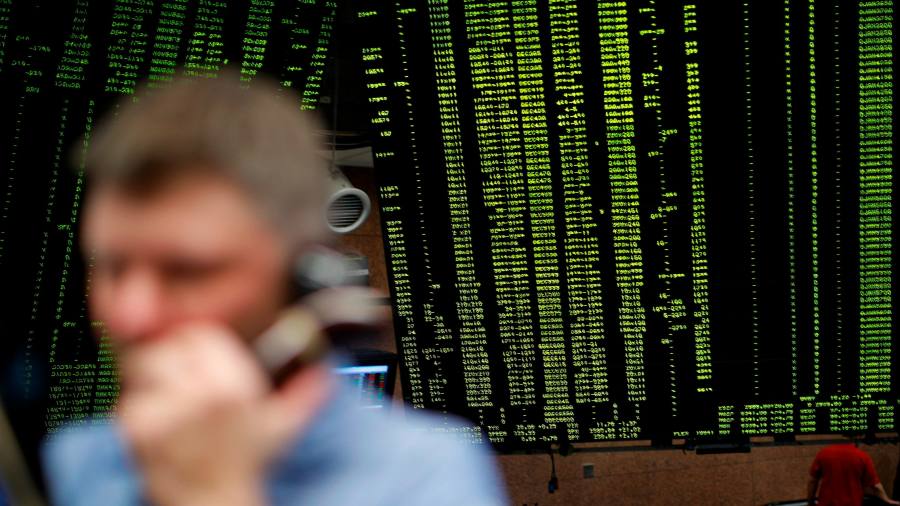Insider traders have used exchange traded funds to conceal billions of dollars’ worth of trades, according to a team of academics who say their finding may be just the “tip of the iceberg”.
Their analysis suggests at least $2.75bn worth of anomalous trades occurred in US-listed ETFs before merger and acquisition announcements between 2009 and 2021.
“Our findings suggest insider trading is more pervasive than just the ‘direct’ forms that have been the focus of research and enforcement to date,” the academics from institutions in Sweden and Australia said in the paper, Using ETFs to Conceal Insider Trading.
Fraudsters with inside knowledge of an upcoming corporate bid have traditionally been caught because they bought the securities of the target company directly, or arranged for co-conspirators to do so.
However, heightened regulatory scrutiny may have led some individuals with inside information to instead buy the stock or options of an economically linked company — typically a sector peer — that might also be expected to rise in price when a bid for its rival becomes public.
The illegality of such “shadow trading” remains unclear, with the first case to be prosecuted in the US, involving trading in options linked to Incyte, a pharmaceutical company, in 2016, still trundling through the courts.
The fresh paper claims that some individuals in possession of material non-public M&A information have gone one step further and traded in an ETF instead, typically a sector fund germane to the target company.
Tālis J Putniņš, co-author of the paper, said this had several advantages. One is that the ETF will probably include the target company itself, almost guaranteeing a “pop” when the deal becomes public, as well as a wide range of sector peers, reducing idiosyncratic risk.
“One can get a direct exposure to the company’s share price via the ETF, but in a vehicle that is more subtle than trading the company shares directly, helping reduce scrutiny from law enforcement”, the paper said.
Second, “the ETF can be more liquid than the underlying stocks. Insider traders want to hide what they are doing and can do so in liquid ETFs,” Putniņš argued.
Again the illegality of such activity is unclear. “It’s in a legal grey zone at the moment until there is a precedent set in the courts,” he added.
Nevertheless, Putniņš and his colleagues found statistically significant increases in ETF trading volume in a five-day window before the announcement of a takeover offer in 3-6 per cent of cases between 2009 and 2021. The analysis was limited to M&A bids that were not preceded by public rumours to avoid cases where heightened trading was driven by information leakage, and was adjusted to account for the statistical probability that some ETFs would have seen abnormal volume before price-sensitive news purely by chance.
The total volume of what the researchers deemed to be shadow trading was $2.75bn, concentrated primarily in the healthcare, technology and industrials sectors.
Among the ETFs that were most frequently used by insiders, according to the researchers, were the iShares Expanded Tech-Software Sector ETF (IGV), Vanguard Industrials ETF (VIS), and Vanguard Health Care ETF (VHT).
Peter Sleep, senior portfolio manager at 7IM, noted that these are modified market cap ETFs in which the smaller, mid-cap stocks that are most likely to be takeover targets have a greater weight than in a traditional market cap ETF.
“This means that if there is M&A activity in a smaller company it will have more of an impact on the ETF and greater profit for the illegal activity,” he said.
The paper found an increase in anomalous trades from the first part of the period, 2009-13, to the next 2014-19, which the authors attributed to “the increasing popularity and liquidity of ETFs as an investment vehicle, making it more attractive to use ETFs for shadow trading”.
However, they found little evidence of such activity in the final two years of the study period, 2020 and 2021. The researchers posited two potential explanations for this.
An optimistic take is that increased regulatory scrutiny of insider and shadow trading, driven by the Incyte case and the passage of the Insider Trading Prohibition Act in 2021 in the US, may have deterred such activity.
Alternatively, though, it could simply be that the sharp rise in ETF trading witnessed from 2020 onwards means a fixed volume of shadow trading no longer registers as statistically significant.
“If ETFs are very liquid and highly traded, shadow trading becomes difficult to detect via abnormal trading measures,” the paper added.
Putniņš believed that future scrutiny of the options market — which affords greater leverage — could provide even firmer evidence of shadow trading in ETFs. Some of his previous research has covered insider trading activity in the options market.
“The paper adds to our knowledge that shadow trading is going on in ETFs and it is something that the regulators need to consider, particularly in the light of greater options trading in the US,” said Sleep.
Read the full article here



